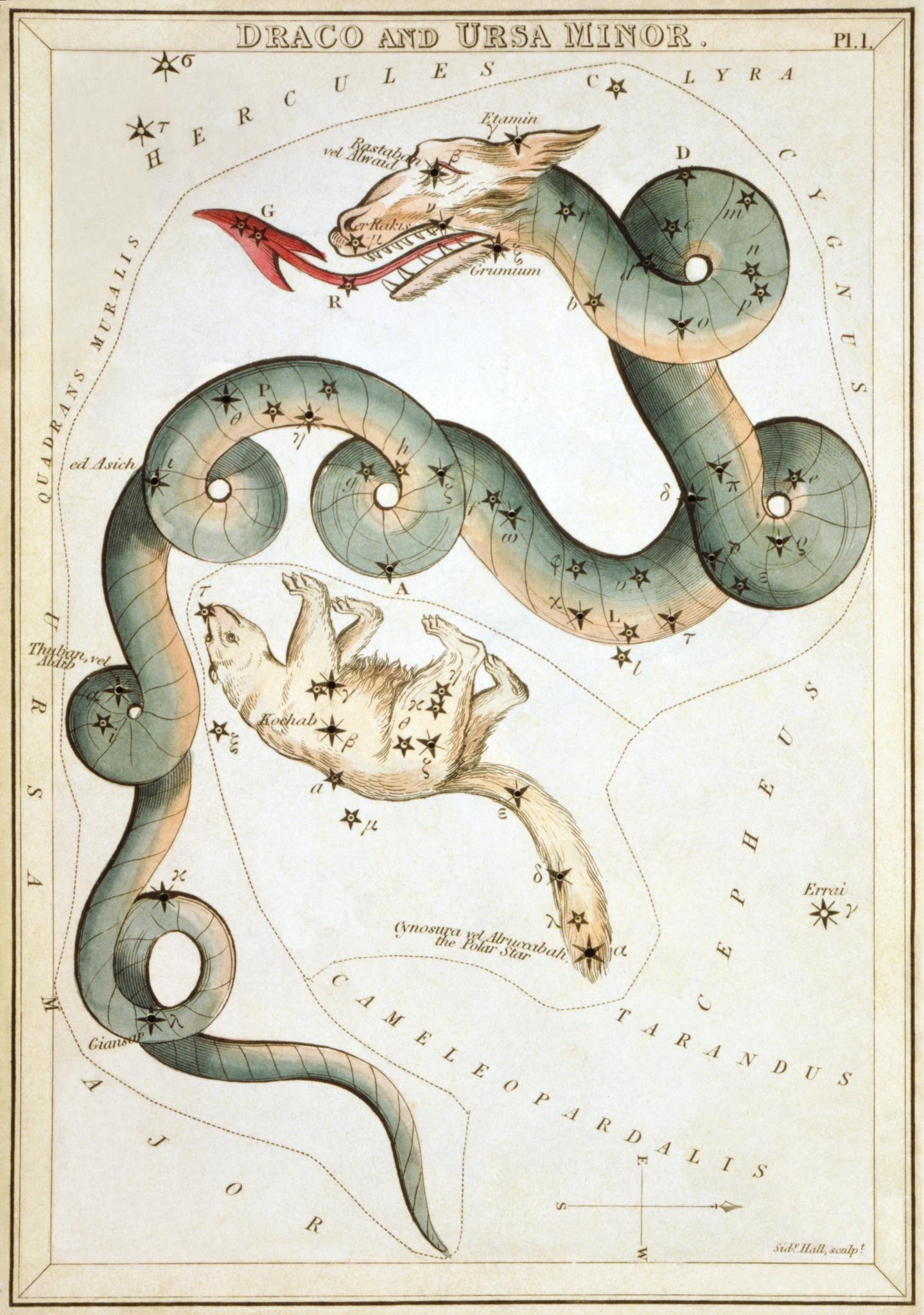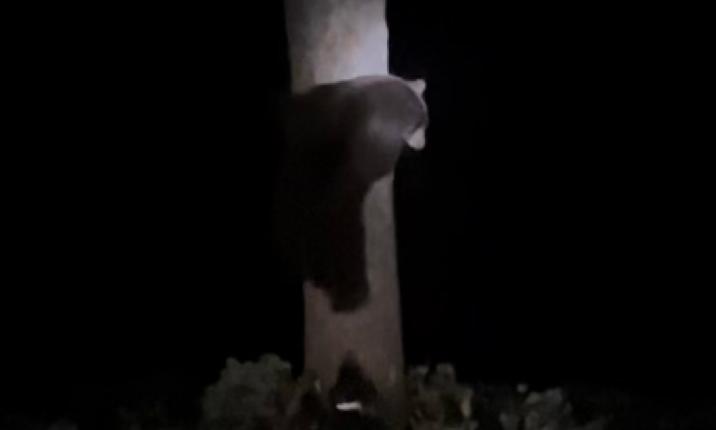
Draco coils around the north celestial pole, as depicted in Urania’s Mirror, a set of constellation cards published in London c. 1825. Source: Wikipedia
Draco is a long, winding collection of stars occupying 2.6 percent of the heavens, the 8th largest of the 88 official constellations recognized by the International Astronomical Union. But, lacking any prominent stars, the “Dragon” or “Serpent” is not particularly easy to spot.
But, with its four-star “head” near Vega (one of the summer’s brightest stars) and its body wedged between Ursa Major (the Big Dipper) and Ursa Minor (the Little Dipper), the constellation truly resembles its name. And, this week, between nine and ten o’clock at night, with Vega close to the top of the sky, for the first time ever, I was actually able to trace the constellation from its head to its tail without any optical aid other than my own eyes.
Being one of the oldest recorded constellations, Draco is associated with many myths. For the Romans, Draco is the snake Hercules sang to sleep when he wanted to steal the immortalizing, golden apples in Hesperides’ garden. The Greeks believed Draco guarded the Golden Fleece and was killed by Jason and the Argonauts during their pursuit of this priceless object. For the Egyptians, Draco was an object of worship, depicted as either a crocodile or a hippopotamus. Ancient East Indians also saw a crocodile when looking at Draco, but Hindus tagged the constellation an alligator.
Within the area covered by this constellation, there are several very distant galaxies, and the “young” Cat’s-Eye nebula — with concentric gas shells, jets of high-speed gas, and unusual shock-induced knots of gas — also resides here.
Featured Articles

Two Plead Guilty to Poaching and Animal Cruelty Charges →
December 30, 2025
Two men face penalties for illegal hunting activities in Sierra County.
Fish and Wildlife Plans to Collar More Deer, Elk, and Wolves →
December 30, 2025
DWR Conducts First Snow Survey of the 2025-2026 Season →
December 31, 2025
Storms Bring Heavy Rainfall and Local Disruptions →
December 22, 2025
Sierra Hardware Plans Extensive Repairs After Flood Damage →
December 8, 2025
